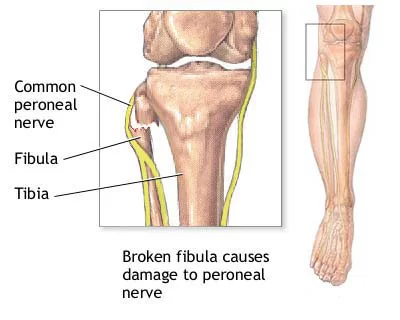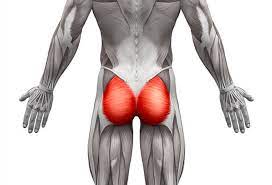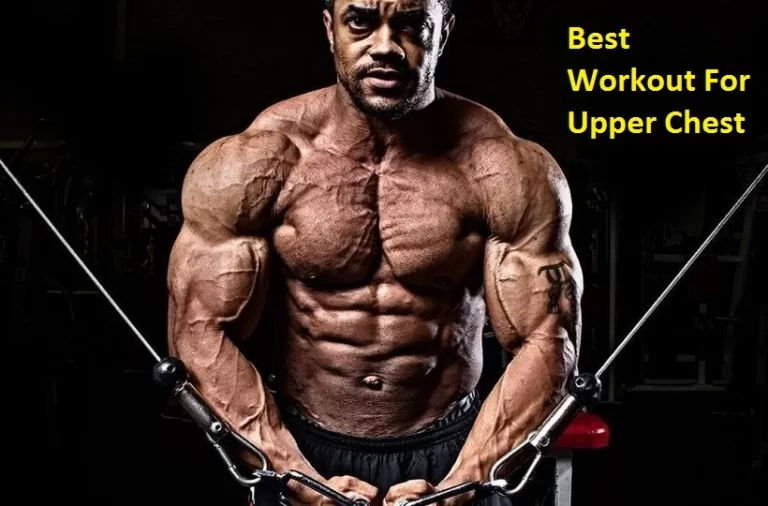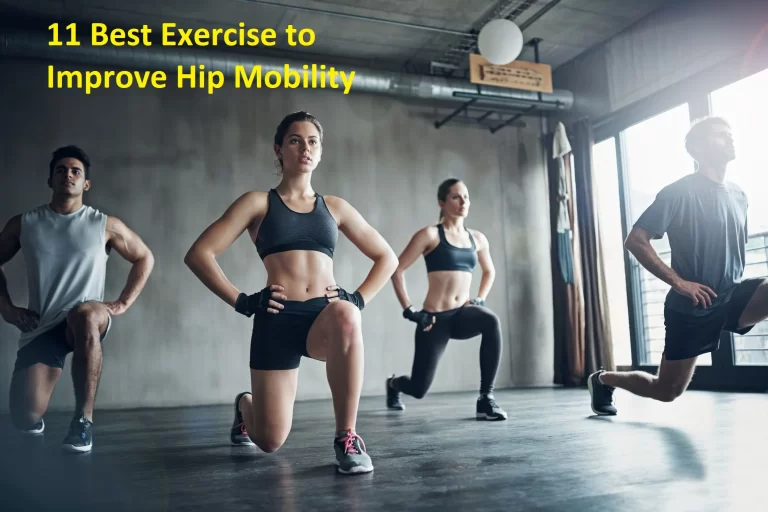Gluteus muscle strengthening exercise
Table of Contents
Introduction
- Gluteus muscle strengthening exercise is an essential exercise to make the hip more stronger and powerful as well. This exercise has many health benefits and participates a critical role in performing day-to-day activities in human life.
What is glute muscle strengthening exercise?
- Glute muscles are the largest muscles in the body & these muscles have a very vital role in the human’s daily life. These muscles are responsible for maintaining balance as well as power when a human is jumping, walking, or even running.
- Most individuals want to strengthen the glutes muscle or buttocks for aesthetic reasons. The glutes are the main mobilizer of the thighs & hips so when the person sits, stands, jumps or even stair climbs, the glute muscle engaged all these functions.
- If an individual spends more time in the sitting position then his gluteal muscle can be weak or even under-worked, weak glute muscle puts the risk of glute amnesia, in this, the glute muscle forgets how to function properly. If this muscle is not working properly after that this can affect the ability to move & risk back as well as knee pain.”
- This is more important to keep the glutes muscle stronger due to nowadays most individuals are spending sedentary lifestyles owing to their work environment & lifestyle choices.
The glute group muscles have three various muscles
Gluteal muscles are a crow of 3 muscles, which are described here:
- Gluteus Maximus:
This muscle action is the hip extension as well as lateral rotation of a thigh, as the person walks backward. - Gluteus medius:
This muscle motion is hip abduction, as a person takes steps out of a bed & balances. - Gluteus minimus:
These muscles assist with walking as well as rotating the legs.
Health benefits by performing the glute muscle strengthening exercise
- Assist to decrease chronic Hip pain
- Muscle-strengthening exercises may make an individual feels stronger.
- Assist to increase metabolism, & helps to lower the risk of falls.
- Strong gluteals are essential for proper pelvic alignment, and propulsion while walking as well as running, & even standing on one leg.
- Assist to improve posture.
- Gluteal muscles also assist to support a lower back while lifting.
- Give assistance to prevent knee injuries.
- Assist to control the motion of the pelvis, hips, legs, as well as trunk.
- Glute exercises may assist to improve posture.
- Glute exercises can assist to develop the entire posterior chain.
Here explained the Best exercises to build the glute muscle strong
Fire hydrant
- How to perform this gluteal muscles strengthening exercise:
- To perform this strengthening exercise: A person needs a resistance band or even ankle weight, & an individual has to take a
- quadruped position(on the hands as well as knees) the knees should be touched to the floor and the hands are shoulder-width apart as well as directly below the shoulders.
- For resistance, the patient can tie the resistance band above the knees or even strap ankle weight or do both. The back should be straight & look directly towards the floor every time.
- Raise a right leg as well as move away from a body up to a 45-degree angle.
- The knee must be at a 90-degree angle & try to lift the leg until aligned with the hip.
- Gradually lower the leg back to the starting position & do this on the left leg.
- Do ten to fifteen repetitions of one to two sets & then gradually increase the number of repetitions.
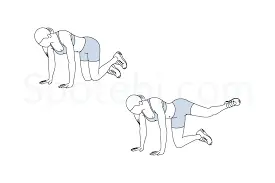
Single leg step-ups
- How to do this strengthening exercise:
- For this exercise, a patient needs one bench. After that, stand to adjust to the bench with the back straight, put both hands on the waist or grab two dumbbells at chest level.
- Place the right leg at a 90-degree angle & place it on the bench, the left leg should be straight & firmly planted on the ground.
- Move a body weight through the heels of the right leg & push off the left foot simultaneously. Pause for ten to eleven seconds & hold the weight in the air up to chest level.
- Gradually come back to the embarking position & repeat this on another side.
- Start with ten to fifteen repetitions then gradually increase the repetitions.
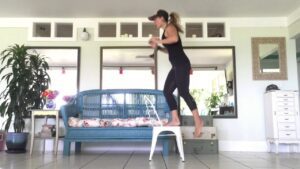
Side squats
- How to do this strengthening exercise:
- For this exercise, a patient needs a resistance band or a dumbbell. The patient has to stand with feet closed in the half squatting
- position, and wrap the resistance band just below both knees.
- Step a little wider than shoulder feet width apart to one side as well as lower the body beyond 90 degrees.
- The back should be straight & core muscles should be engaged. The patient has to push back through the hips only.
- Drive through the heels to push a body back to the starting position.
- Do ten to fifteen repetitions for one to two sets on one side then move to the next side.

Glute bridges
- To perform this exercise, the patient needs a bench & one dumbbell, as well as the patient, has to lie on the back of the yoga mat over a comfortable surface.
- The arms are extended & placed by a side with the palm face down on the ground or hold the dumbbell on the hip for more intensity.
- Lie near the bench so the legs are situated at 45 degrees when the heels are on their surface.
- Raise yourself upward into the straight position by squeezing the glutes as well as driving the body weight through the heels.
- Hold this position for five to six seconds after that gradually lower it down & return to the flat spine.
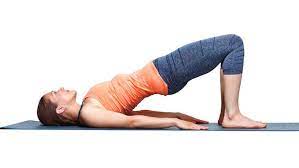
Bulgarian split squats
- How to do this Bulgarian split squats strengthening exercise:
- To do this exercise the patient needs a dumbbell & one bench or a chair, a patient has to stand three to four feet away from the bench.
- To increase the intensity of exercise hold one or two dumbbells at chest level. Bring the right foot forward, position yourself at a 90- degree angle, as well as place the left foot on the bench behind you.
- The trunk must be upright as well as core muscles engaged, & flexed
- The right leg holds for one to two seconds to lower into the squat position.
- Hold for two to three seconds then drive the body weight through the left heels to bring yourself up & back to the starting position.

Lateral banded walks
- How to do this strengthening exercise:
- For this exercise, a patient has to wrap the resistance band around the legs. Just above the knees.
- If the patient has the desire to add more resistance then place this below the knees. Now push the hip backward as well as flex the knees as the patient is squatting.
- A back should be straight as well as engage the core muscles a patient moves the left foot 9 to 11 inches to a left, after that bring the right foot in towards it.
- Then repeat this on another leg as well.
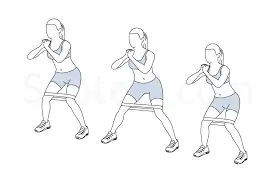
Curtsy lunge
- How to do this strengthening exercise:
- For this exercise, the person has to stand shoulder-width apart.
- The back should be straight as well as core muscle tight, bring the right leg behind & to the outside of the left foot.
- Drop the hips through the glutes until the left leg is nearly parallel to the floor, then come back to the starting position.
- Do ten repetitions on one leg then switch to another leg as well.
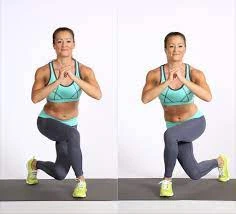
Weighted deadlift
- To do this exercise: the patient has to stand with the feet parallel & hip-width apart. If a patient feels comfortable, he can hold light dumbbells.
- After that, keep the spine long as well as the gaze forward. The shoulders should be back and down as well.
- Next, squeeze the glutes as he can fold from the hips, bending the knees so that the seat reaches back past the heels. Resist an urge to round the spine in order to “give in to the weight.”
- Allow the glutes as well as the belly to control the descent & ascent.
- Then the patient can increase their weight gradually as he can begin to feel stronger & more comfortable.
- Tip: To assist keep the spine from flexing, imagine the person has a pole strapped around the torso.
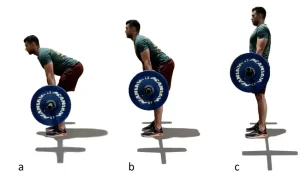
Weighted hip extension
- Embark on all fours with the knees directly under the hips as well as the hands under the shoulders.
- Keep the belly drawn in, shoulders back as well as down, & the spine in a long line. Place the light (3- to 8-pound) dumbbell in the crook
- of the left knee.
- Use the power of the right glute to balance as well as the power of the left glute to lift up the leg.
- After that, flex the foot & raise the knee up a little higher than the hips. Maintain balance by distributing body weight equally over both hands as well as the lowered knee.
- Repeat ten times & switch sides. Repeat one to three sets in one day.
- Tip: Exhale as a person lift the leg. Keep the neck long. To keep the ribs from sagging toward the ground, imagine an individual is balancing a teacup on the back.
- Advanced option
- Add ten to fifteen pulses on the leg lift. Also, an individual can use the resistance band. Anchor it with the hands & loop this around the arch of the foot. Repeat the same actions with this added resistance.
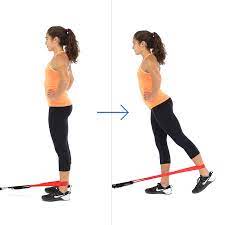
Hip Thrust / Glute Squeeze on Ball
- The hip thrust on the ball is another great choice for working the glutes. A ball adds some instability as well as forces an entire lower body to work. Carrying weights on the upper thighs counts more intensity to the exercise.
- How to Do Hip Thrusts exercise to Strengthen the gluteal muscles:
- Start in the bridge position with the head resting on a ball as well as the butt lifted. If a person wants, place weights on the thighs for added intensity.
- After that, lower the hips to the floor. Try not to let a ball roll around.
- Next, squeeze the glutes to lift back to the embarking position.
- Repeat for one to two sets of ten to fifteen repetitions in one day. Attempt lifting the toes for a better intense move
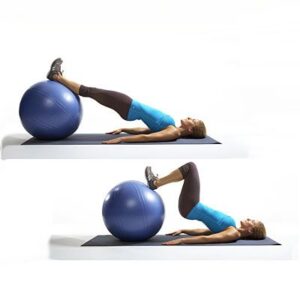
One-Legged Deadlifts
- Deadlifts are great for the glutes, hamstrings, as well as lower back, but this one-legged version is an important good butt workout.
- Performing anything on one leg adds intensity as well as this also involves the stabilizer muscles to keep a body balanced.
- Keep in mind that with deadlifts, proper form is essential. A person should skip this exercise if he has back issues.
- How to Do Deadlifts gluteal muscles strengthening exercise:
- Holding weights, take the left leg back behind you (about a foot or so) & lightly rest on the toe.
- Tip from the hips as well as gradually lower the weights to the ground as far as the flexibility allows.
- After that, keep the back flat (or with a natural arch). Make sure an individual keeps their abs contracted to protect the back.
- Squeeze the glutes of the working leg to bring this backup.
- Do one to three sets in one day of ten to fifteen repetitions on each side.
- Hiking works the glutes & also roasts a ton of calories. Not only does a person works harder if he is hiking uphill, but he will expend even more energy if there’s a change in altitude. A 140-pound individual burns about 390 calories in about an hour during hiking. If he lives in a flat area, try raising the incline on the treadmill to mimic trekking up a hill.
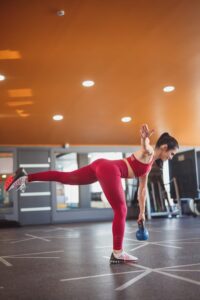
Glute kickbacks
- To do this strengthening exercise: First of all, use a resistance band to make this more advanced. Place this around the legs just over the knees. After that, with hands on hips, lift one leg back as well as squeeze the glutes. Next, repeat with the other side as well. Do ten to fifteen repetitions in one session. Do three sessions in one day.
Glute Squeezes
- Glute squeezes are a great exercise to embark with to get the feeling of glute activation as well as isolation
- To do this strengthening exercise: First of all, sit or lie in a comfortable position. After that, squeeze the buttocks together as tight as a person can & hold. An individual should feel himself lift slightly. Do this exercise ten to eleven times in one session. Do two to three sessions in one day.
Glute Clam Shell
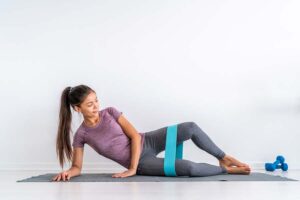
- The clam is one of the best glute strengthening exercises for glute medius isolation & is a must for pretty much anyone. Glute medius is super essential for stability as well as control. Most individuals with back, hip, knee, or even foot issues have weakness in their glute medius.
- Clam exercises are one of the best ways to build glute muscles and strengthen them.
- How to do this strengthening exercise: First of all, to do this exercise: The patient should lie on the side, knees bent, feet together, with shoulders, hips as well as feet in a straight line.
- Keeping their feet together, activate his glutes as well as lift his top knee as high as he can without rolling back at the pelvis. After that, hold gradually lower back down.
- Next, keep the pelvis central, not rolling forwards or even backward & draw a top hip down, away from the shoulder to lengthen through the waist.
Single-Leg Glute Bridge

- Single-leg bridges are a much more challenging glute strengthening workout than a simple bridge both from the strength as well as the control side. If the person has weak glutes, a pelvis will tend to drop as he lifts the leg so watch out for that.
- How to do this single-leg glute bridging: Get those buttocks the person always dreamed of!
- To do this strengthening exercise: The person has to lie on the back, knees bent, feet hip-width apart
- Clench glutes, lift buttocks as well as hold in the bridge position
- Next, lift one foot as well as straighten the knee, keeping the thighs inline & hold.
- Make sure the pelvis does not dip down at all.
- Lower the foot as well as repeat with the other leg. Do 9 to 13 times in one session. Do two sessions in one day.
- How To do Progression:
- Single Raise: Embark with one leg out straight (thighs parallel) as well as push up into the bridge through another leg
- Marching Bridge: From the normal bridge position, alternately march the feet up as well as down, great for building endurance.
- Unstable Bridge: Have the foot on a roller or even a gym ball as the patient performs the exercise.
Glute Thrust
- The glute thrust, AKA a hip thrust, is a more advanced glute strengthening exercise, this might not look it but it is much harder than a simple bridge.
- This exercise is not recommended if the patient has back issues.
Glute Strengthening Hip Thrust Exercise
- How to do this strengthening exercise: How to do this strengthening exercise: sit, lean back against the gym ball or even bench, feet hip-width apart, knees bent, spine in the neutral position.
- Clench glutes, push down through feet as well as raise buttocks up letting the upper body move back slightly
- If the person needs to, use the arms for some support, but do not arch the back. Do 7 to 14 times in one session. Do three sessions in one session in one day.
- Hold the position & then lower down
- How To Progress
- Weights: Hold a weight for example medicine ball while performing this exercise
- Marching: While the hold phase, alternately lift one foot and then the other
- Single Leg: embark with one foot lifted & keep this in the 90/90 position (hip/knee angle) throughout, pushing through the other leg.
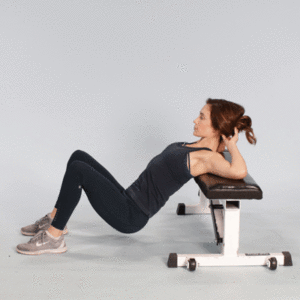
When did the patient not do the Gluteus muscle strengthening exercise?
- If the person feels any pain or even discomfort while this exercise then stops immediately.
- If the doctor advised a person to take rest.
- If the leg bone is fractured.
- If a person is recently undergone any surgery.
- If the person is suffering from back as well as hip pain.
FAQ
Typically, the most prominent cause of weakness in these muscles is a lack of activity or even a sedentary lifestyle. As technology advances as well as more individuals are confined to desk jobs in which most of the day is spent in the sitting position, the glutes atrophy & the anterior hips become accustomed to the shortened position.
For less-serious cases of glute imbalances, this process might take four weeks. For more serious glute imbalances, the process could take three to six months. It is impossible to tell. Just be consistent as well as diligent & the patient should be able to restore proper function.
Lift the hips off the floor & form a straight line from the shoulders to the knees. Backward tilt the pelvis as well as squeeze the butt. Push the knees out into the band to further activate the glutes. Hold this position for ten seconds & perform one to two sets of six to ten repetitions each.
Probably the biggest reason that the glutes are not growing is owing to inactivity. The sad fact is owing to our modern sedentary lifestyle individuals suffer from underactive glutes & they struggle to develop their glutes due to they cannot fire the muscles while training.
While standing on the facade of a mirror, complete a single-leg squat. If the opposite hip of the leg that the patient is standing on drops, or if the knee of the leg a patient is standing on rotates inward, that indicates a weakness in the gluteus medius.


